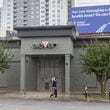Since the beginning of the pandemic, health officials have urged the public to do three things: wear masks, maintain social distancing and wash hands often.
Two reports published by the Centers for Disease Control Wednesday have led the agency to reiterate the importance of these safety practices — particularly mask-wearing — at the gym.
Each report focuses on gym experiences from last summer. One occurred in Chicago and another in Honolulu.
At the Chicago facility, four to eight high-intensity indoor classes were offered daily from Aug. 24 to Sept. 1, 2020.
There were 60% confirmed positive COVID-19 cases. Additionally, another 7% of probable cases occurred after that, while attendees had compatible symptoms, they tested negative or had no RT-PCR test results.
Every class was held at 25% capacity or under. Upon entry, attendees were required to use masks, have their temperature taken and have screenings for symptoms. However, individuals taking part could remove their masks while exercising.
Social distancing measures were also employed, with participants stationed six feet or more apart. They also brought their own mats and weights.
In Honolulu, a fitness instructor tested positive for the coronavirus on July 1, 2020. He was linked to 21 COVID-19 cases.
Before his symptoms began, the instructor taught classes at two local facilities from June 27 to 29. In one 27-person yoga class, the instructor wore a mask. While he wore a mask in the one-hour class, participants did not. Participants did not have any reported cases.
At another facility, on June 28, the instructor led a one-hour, high-intensity stationary cycling class a few hours before his symptoms started. Following that facility’s protocol, the instructor nor the 10 participants wore masks while exercising.
“Doors and windows were closed, and three large floor fans were directed toward the participants for cooling,” the CDC report said, adding that the instructor “was on a pedestal facing participants, shouting instructions and encouragement.”
The instructor was more than six feet away from participants and social distancing was in place as each cycling station was six feet or more apart.
Ultimately, all the participants tested positive for COVID-19, counting a second fitness instructor among them. The second instructor was tied to additional cases after providing personal training and kickboxing sessions to participants at a third facility.
“To reduce SARS-CoV-2 transmission in fitness facilities, staff members and patrons should wear a mask, and facilities should combine engineering and administrative controls including improving ventilation; enforcing consistent and correct mask use and physical distancing (maintaining ≥6 ft of distance between all persons, limiting physical contact and class size, and preventing crowded spaces); increasing opportunities for hand hygiene; and reminding patrons and staff members to stay home when ill. Conducting exercise activities entirely outdoors or virtually could further reduce SARS-CoV-2 transmission risk,” the CDC said in the report.
About the Author






